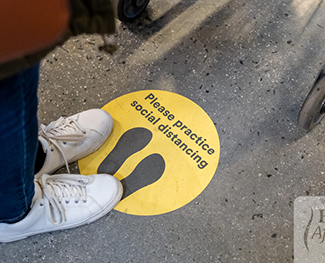Feeling submerged under an ever-growing pile of administrative tasks, client sessions, and the constant pressure to balance work with personal life? You’re not alone. Running a private therapy practice brings with it a unique set of challenges that can make even the most seasoned professionals feel overwhelmed. Having worked with hundreds of affiliated clinicians over the years, we at HAM have learned that amidst these challenges lies an opportunity to redefine the way we view and manage our time. We want to explore practical, effective time management techniques specifically tailored for private therapy practice owners to help you reduce the overwhelm and find more joy in your work.
Understanding the Value of Your Time
The first step in mastering time management is recognizing that your time is incredibly valuable—especially in a profession built upon the premise of offering your time and presence to others. Each minute spent on less critical tasks is a minute taken away from your core mission: to heal and nurture.
Techniques to Reclaim Your Time
Prioritize and Plan
Start by distinguishing between what’s urgent and what’s important. Use tools like the Eisenhower Matrix to categorize tasks and focus on what truly moves the needle for your practice (what’s important, what’s urgent, what’s not urgent, what you can delegate, and what you can delete). Daily planning can also be transformative—spend the first few minutes of each day or the last few minutes of the previous day making a to-do list organized by priority.
Embrace Technology
Leveraging technology can significantly reduce time spent on administrative tasks. A robust electronic health record (EHR) is essential to streamlining operations. For current affiliates using our EHR, be sure to take advantage of its many features and use it to its full capacity. (If you’re unsure how, we’d love to show you!)
Set Boundaries and Learn to Delegate
We see so many therapists falling into one common trap: believing they need to do everything themselves. We encourage you to Identify tasks that can be delegated or outsourced. For example, this might mean hiring a virtual assistant to manage emails and calls. It can even mean affiliating with us. After all, this was the foundation on which HAM was born. We offer administrative and billing support so you can spend more time with clients, doing the work you set out to do. Please, lean on us! It’s what we’re here for.
Setting clear boundaries around work hours and communication can also prevent work from spilling over into personal time.
Batch Tasks and Block Time
Group similar tasks together to reduce the mental load and increase efficiency. Schedule these batches during periods of the day when you’re naturally more productive. Time blocking can also be a game-changer. Allocate specific blocks of time for client sessions, administrative work, and importantly, breaks and personal time.
Reflect and Adjust
Regularly take stock of how you’re spending your time. Are there tasks that take longer than they should? Are you, perhaps, spending too much time on non-essential activities? Use these insights to adjust your approach, experimenting with different techniques to find what works best for you.
Implement a Self-Care Routine
Remember, time management isn’t just about squeezing every drop of productivity out of your day; it’s about creating spaces for rejuvenation and self-care. This is especially critical in a caregiving profession like therapy. Ensure you’re setting aside time for activities that nourish your physical, mental, and emotional well-being, even if it’s only 10 minutes a day.
The Road Ahead
Transforming the way we approach time management doesn’t happen overnight. It requires patience, persistence, and a willingness to experiment with new strategies. But by implementing these techniques, you’ll not only lessen that overwhelming feeling but also free up valuable time to focus on what matters most: providing quality care to your clients and leading a balanced, fulfilling life.
Sign Up To Receive Our Latest Blog Posts!
Learn more tips on living well and understanding mental illness. Help to end the stigma, and hear inspiring stories of recovery. Sign up here!










